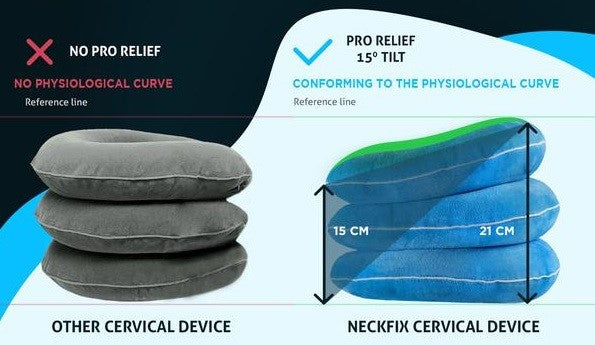The science of cervical traction
As we all know, neck pain is a common pain, and all we need a treatment that makes the job done.
One of the best ways its cervical traction, which means of separating the cervical vertebrae 1 to 2 mm to help relieve painful neck conditions or cervical radiculopathies.
 |

|
For professional cervical traction, we have to take in mind some guidelines, like:
- Variables treatments
- Angle
- Force
Time of application.
Here we can see what Mr. H. Duane Saunders PT, MS, and Mr. Robin Saunders Ryan PT, MS, in Orthopaedic Physical Therapy Secrets (Second Edition), 2006 said about the importance of variables treatment for cervical traction.
Chin halter versus occipital wedges—When traction is provided with a standard head halter with a chin strap, force is transmitted through the chin strap to the teeth, and the temporomandibular joints become weight-bearing structures. A common problem from administering cervical traction is aggravation of the temporomandibular joints because of the force applied at the chin. It is generally advisable to use a cervical traction system that pulls from the occiput, rather than placing pressure on the chin. If the patient has known temporomandibular dysfunction, a chin halter should never be used.
In other words, over the door, cervical traction can become very dangerous and create more neck pain caused by the dysfunction of temporomandibular joints.

Disfunction that very few professionals can know about, not to be mention regular people that have nothing related to chiropractic or physical therapy.
Another topic which is important when we want to perform cervical traction is the cervical angle.
Many clinicians believe than the higher the angle of flexion is, the greater the intervertebral separation in the lower cervical spine will be.
More of that, a specific study has proven that between 15 and 30 degrees of flexion, we target the decompression of C4-C5-C6, and at 35, we target the C7- and T1.
One of the icons of physical therapy H. Duane Saunders PT, MS leader in the field of clinical and educational physical therapy, co-author of four textbooks used in more than 65 physical therapy schools and member at Kansas State University Foundation's board of trustees, have recommend a 15-degree angle to accomplish the cervical traction.
In other words, a device that can’t offer you flexion of the head at minimum 15 degrees, it’s just an empiric way to push your head up, not a cervical traction device.
The force of the traction it’s essential to be 100% in the hand of the user. He knows alwas what is best for him, but always not too much. The test has revealed that a force between 25 and 40 Lbs, it’s just perfect to create a space between the cervical disks, especially for C5-C6-C7.
The time for application is starting from clinical experiences from 5 minutes, progressively to 20.
With all of these in mind know I hope you have all you need to know about the science of cervical traction and how to chose your cervical neck traction device.
Best regards,
Dr.Fix
References

